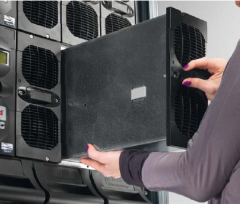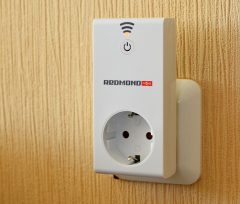Video resolution for 7 inch tablet. Screen sizes
(1
votes, average: 5,00
out of 5)
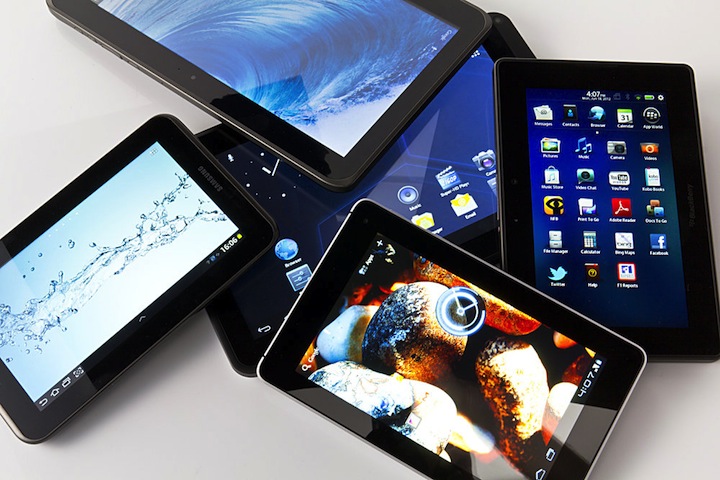
When choosing specific model tablet computer is worth paying attention to a number of parameters. One of the most important of them is undoubtedly the size and quality of the screen, because it is on the screen that you will view information, graphics and use it to control the operation of the device. So, what kind of screens do tablets have? They can be classified according to three criteria: screen size, resolution and performance technology.
Below you will see this difference even in simple applications without extravagant graphics. Which tablet size should you choose? There is no standard size, but most models range between 7, 8, or 10 inches. This choice is very important and depends on what kind of use you want to have. The question will be to determine what you want from your tablet.
If you want an alternative to a computer, you can choose a 10-inch size which is more convenient for reading and surfing, and if you want to carry it around, choose a smaller size. To test tablets before purchasing, try using the keyboard every time. You will be able to appreciate the handling of the tablet if you feel comfortable enough or cannot take notes and send emails.
Tablet screen dimensions.
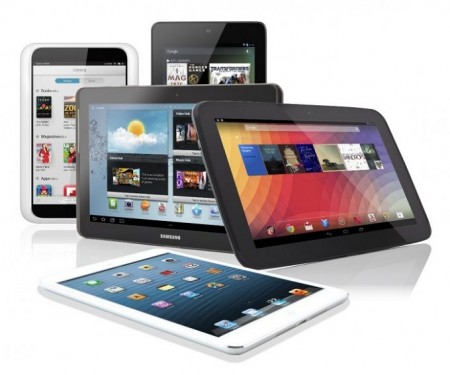
Modern gadgets can be divided into four groups on this basis:
The first is with a screen size of 5-6 inches diagonally. Tablet computers belonging to this group are primarily distinguished by their compact size and slightly larger than standard smartphones. The graphic picture displayed on such a screen is distinguished by high definition, but small in size. The undoubted advantage of this group is a long time autonomous work devices, since the smaller the screen, the less power consumption will be.
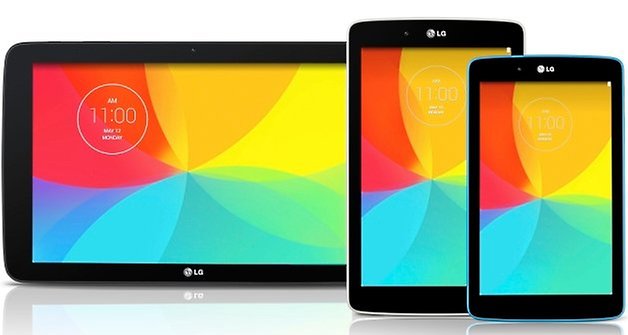
If your version is too old, the apps you intend to use most likely won't adapt or even be compatible with your tablet. In addition, builders must keep track of their tablets through regular updates after they are released.
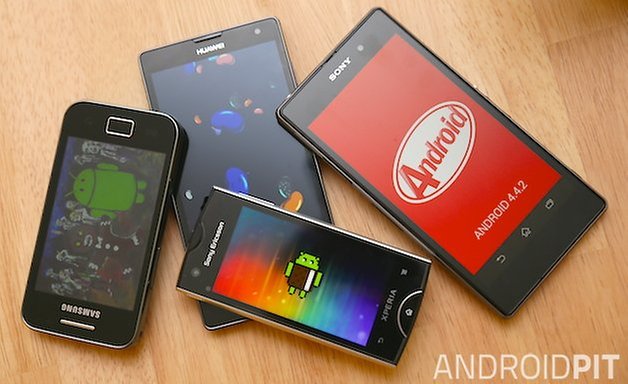
On the tablet, you will be using applications. While some vendors link to the largest vendor, others choose to build their own app hub. This means that not all applications will be available for your device, or they will not be updated regularly.
The second group - tablets with a screen of 7-8 inches diagonally. These devices are also called "pocket" ones and it is generally accepted that this screen size makes working with the device the most comfortable and optimal. With such devices, you can easily watch movies, chat with friends in social networks, surf the Internet and so on.
It's not drama if you devote your tablet to reading books, for example, but it's much more if you want to use a good word processor or battery, for example. Fortunately, there are solutions to solve this problem. 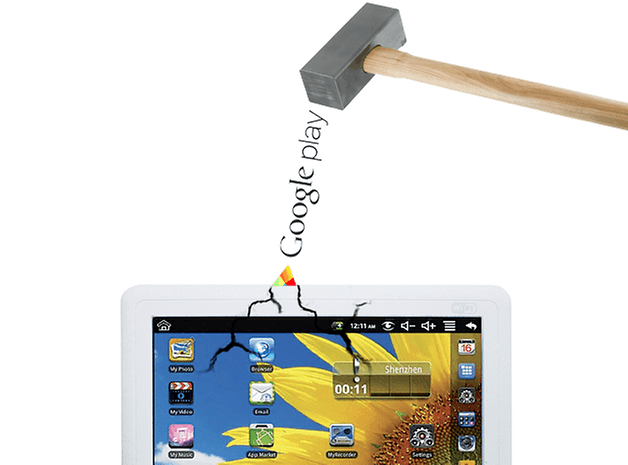
Choosing a processor is a daunting task. Its only name will not help you really know if it fits the device you see.
RAM and storage capacity
Nothing worse than a tablet moving slowly or freezing on certain apps or games. However, some less powerful tablets may be suitable due to their good hardware optimization. The higher the RAM, the better your device will be able to avoid slowdowns or lags, so try not to go below 2GB or you will run into this inconvenience.
The third group - devices with a screen size of 9-10 inches. At first glance, the dimensions of such a tablet may seem too large. It seems that these gadgets are inconvenient to use, but this is only a first impression. On the contrary, on a ten or eleven inch screen, you can watch movies in high quality, work with office programs and applications, and surf the Internet.
Sorting your time to save tablet space can quickly get annoying. It is very important to know the weight of your tablet. Unlike a computer, you have to carry it in your hands to use it. If the tablet is too heavy, you will quickly understand its very complex work.
You will often carry your tablet with you. Try, rather, weighing up to 350 grams, if possible. 
Even if your tablet doesn't replace a high-performance camera, think about the photos you can take and choose the type of camera: photos with friends inside, will you try to share them? front-cameraallowing you to call?
And the fourth group - devices with a screen of 11.6-12.5 inches. These tablets provide maximum comfort during use, but they are quite massive and large in size. It is already difficult to use them as mobile devices and they are most of all adapted for stationary operation.
Types of matrices and manufacturing technologies.
The most common is IPS matrix... This technology was developed back in 1996 and since then has reached its perfection. Screens made using this technology provide maximum image quality and color display.
The megapixel count will help you know the best sensor, but be careful: if your photos are stolen, you will need space to store them! If you want to use your tablet outside frequently, autonomy is an important point to stop at. The data sheet often contains a number indicating autonomy. Be careful though this figure is still somewhat overstated.
Feel free to consult our tests. The removable battery allows for a last resort in the event of an error: removing the battery. The possibilities are wide, but this really raises the question of the usage chosen for the tablet.
Several years ago, Samsung Electronics introduced the first tablets with PLS matrix... This technology is characterized by the minimum response time, high quality graphics.
Another technology used in modern gadgets is AMOLED... The advantages of this type of screens are the ability to display the widest range of colors and low power consumption.
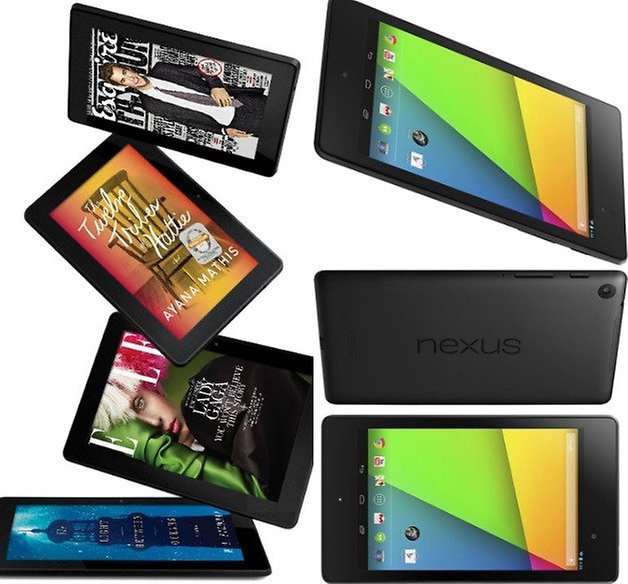
Buying a tablet at the best price is one thing. If you are aware of the risks that exist on the device of your choice, please inquire about the service. If you are unsure between several models, the best decision is, of course, to go to the store to pick up the models before making your final decision. Remember also that the best advice will be from those who already own this tablet.
Screenshots of current web traffic
You will find all questions or opinions in ours! To read while performing sorting, one cannot generalize all cases. It accounts for at least 15-20% of traffic. 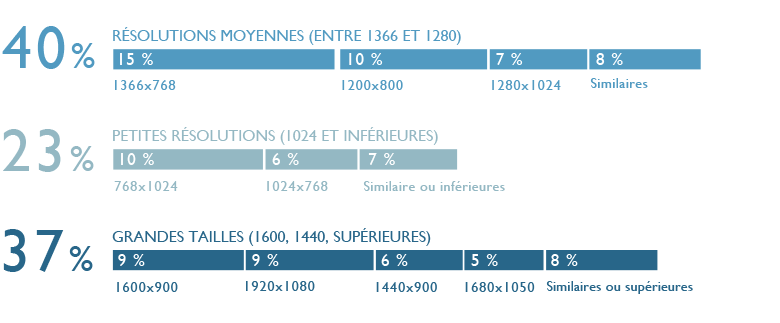
These statistics may vary depending on the theme and type of website. They demonstrate a significant inconsistency in usage that a web designer must consider during web design and development.
The newest development of modern tablet manufacturers is the technology Super Сlear LCD... The main difference between screens using this technology - maintaining high image quality and contrast regardless of the brightness of lighting and viewing angles. Simply put, with these tablets, you can comfortably work in bright sunlight and view images at sharp angles.
Return to the screens of the past
The methods of consultation are different: computer, tablet, mobile. Then, depending on the audience targeting the topic, several options are possible. If, for example, the presence of large screens is present, it may be advisable to choose a flexible design that will span all screens, with an ideal large display. The communication goals and the context that will cause the user to visit the site also influence the choice.
There are several trends today
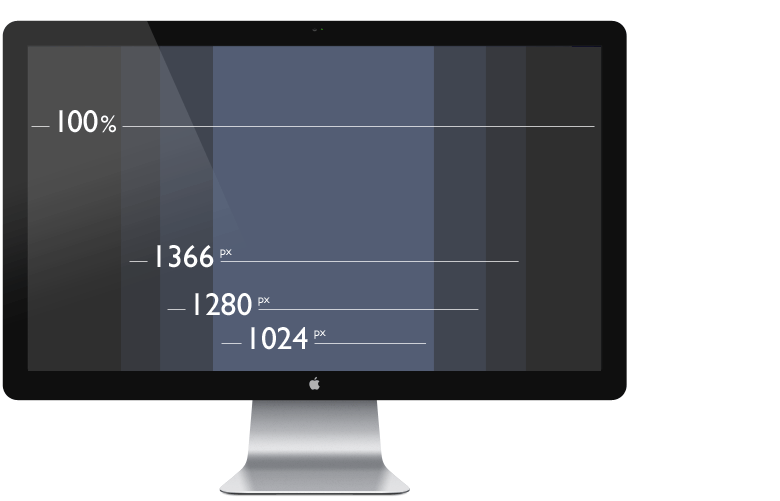
Thus, the site covers all possible resolutions. The areas are then proportional to the screen size, others can remain fixed, some disappear or become more synthetic for small mobile-type screens. Depending on the content presented on the site, the disadvantage is often the presence of areas that are ultimately too large on very large screens, which sometimes distorts the design and content, so reading is not facilitated with lines of text "endless" sometimes up to 60 words of the first paragraph lines.
Tablet screen resolution.
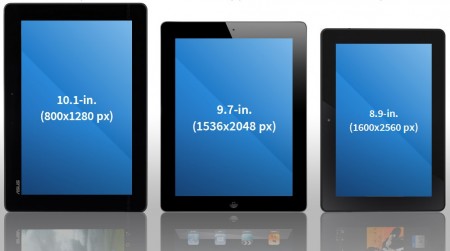
The value of this parameter directly depends on the screen size. For seven-inch screens, for example, the resolution is 1024x768 pixels, eight-inch screens are 1280x800 pixels, and so on.
The most optimal and comfortable for watching movies and working with programs and applications is considered to be a resolution of 1280x800 pixels. But this is for budget models.
This solution allows you to maintain 100% coverage of various screen resolutions without distorting content or design with very large screens... In this case, flexible areas can coexist with fixed areas to have a perfect display.
Many fixed or flex sites now include landing for a different display on mobile phone... The rest of the article is devoted to analyzing choices for mobile phones and tablets. 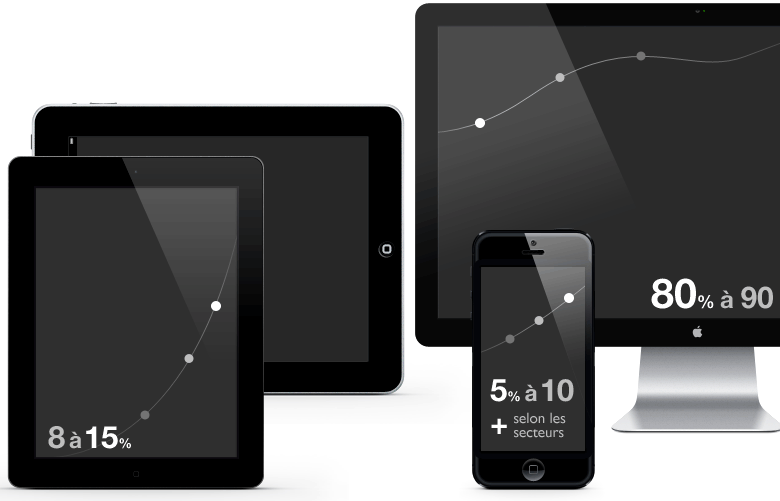
Mobile navigation is also on the rise, but not everywhere. Mobile surfers are often looking for concise information, today few mobile users actually surf the Internet like on a computer or tablet, so depending on the type of site and topic, the deviations can be significant.
Have apple tablets these figures are much higher and for eight-inch models can be 2048x1536 pixels.
As practice shows, the most in demand today are tablet models with a screen size of seven or eight inches, capable of supporting a resolution of 1280x800 pixels and made using IPS or PLS technology. Such devices provide maximum comfort at a minimum cost and investment.
Mobile browsing ranges from 5% to 10% on most sites. This is sometimes more important in certain sectors of activity with views of up to 20% of total traffic. Combined consultations on a tablet and a mobile phone represent at least 10-20% of traffic, that is, one or two out of ten Internet users.
Mobile and Tablet Screen Solutions
Mobile phone and tablet resolutions are very different. The choice of fluid or level design appears to be a fairly consistent choice for better control over optimization. This choice sometimes turns out to be a mistake today, the site then displays in mobile version on many tablets, which is inconsistent with the use of internet users. The distinction between a mobile display display and a tablet display is important to define.
There are many tablet computers on the market in a variety of sizes, brands, and manufacturers. The range of prices for tablets is also truly huge - from $ 50 for an unnamed "Chinese" to $ 1,000 for flagship models of famous brands. In order to choose the most suitable option that will not disappoint soon after purchase, it is worth understanding the main characteristics of modern tablets, as well as their hardware and software features.
There are four types of mobile versions possible in website design
A version of a mobile application specially designed where formatting and content differ from the site. The display is ideally optimized for use in mobile devicesoh. This choice allows you to have the perfect display. The main problem often arises in the future evolution of the site and the mobile version, managing two versions in parallel can become quite painful.
Optimized mobile version based on the site, where the content is the same as on the site, only the layout is changed. The display allows you to hide and highlight different areas of the site to match more direct navigation. The size of the texts also increases, as on mobile application... This choice is often interesting in that it allows the site and the mobile version to be operated at the same time, so that evolutions can be taken into account automatically without any specific interventions on the mobile phone, although disadvantages can manifest themselves in the ease of navigation through the site. targeting users with pages exclusively for navigation.
Screens
The first thing we pay attention to when choosing a tablet is the quality of its screen, because it is with the screen that we have to deal with every time we use the device. In the latest generation models, matrices of three main types are used: TN TFT, IPS and its modification PLS.
Today TN TFT screens are installed only in the most budget models of tablets, since the only advantage of such matrices is their low cost. There are much more drawbacks, and the most noticeable of them are mediocre color rendition and narrow viewing angles, especially vertically.
A hybrid version, in which a mobile-optimized site-based version contains several additional mobile pages to better promote navigation and quick access to accurate information. Liquid version equivalent to the site if it was designed with a permission-aware fluid design weak screens... This solution provides correct display in many cases without requiring further development... The content and formatting of the mobile version is then exactly the same as on computer screens or tablets.
The most common type of screen in modern tablets is IPS. Until recently, such matrices were considered too expensive for mass models, but today they are installed even in economy-class "tablets", which, of course, cannot but rejoice. The undoubted advantages of IPS matrices are high quality of color rendering, deep black color and wide viewing angles, which makes them the best choice for working with photos. The downside is a slower response time than TN panels, but on a tablet you can hardly feel it.
Optimization is sometimes required to scale without compromising layout. Small optimizations to enhance the poster are also possible, especially for displaying larger texts. This solution might be interesting if the content presented is quite visual, such as with image galleries.
More convenient than a smartphone, as powerful as a computer, but less bulky, touch tablet today imposes the missing link between these two irreplaceable devices. If you are looking to buy a tablet, we recommend that you review this guide as it will help you make the best choice.
PLS-matrix is \u200b\u200ba modification of IPS-matrices developed by Samsung and installed mainly on tablets of this particular manufacturer. The main advantage of this type of matrix over IPS is the visibility of the image in bright sunlight, which is indispensable for a device designed for constant use.
It is quite rare to find tablets with screens based on MVA / PVA matrices, which are close in response time to TN TFTs, but have wide viewing angles and provide almost as good color rendition as IPS matrices. MVA was once developed as a more affordable alternative to IPS, and with the decrease in the cost of the latter, they have lost their relevance. In addition, MVA has a specific feature to distort the color shades of the image when deviating from the perpendicular viewing axis, which is absent in IPS.
Typical screen sizes for tablet computers are 7, 9.7 and 10.1 inches. Seven-inch models are considered compact, while 9.7- and 10.1-inch models are considered full-size. The former are more suitable for Internet surfing, social networking and reading e-books, the latter are much more versatile: among other things, they are convenient to use for drawing, watching videos and reading illustrated books and magazines in pdf format. Occasionally there are also non-standard diagonals - for example, 8 or 9.4 inches.
Not only the size of the display is important, but also its resolution: the higher it is, the more information can fit on the screen and the less visible the pixel structure of the matrix. The new standard for pixel density was set by Apple, which released in 2010 gadgets with a Retina display matrix, on which you cannot see the pixels if you hold the device at the usual distance from your eyes. For a tablet, this is about 15 inches, or 38 centimeters, and the density of dots on the iPad of the latest generation is 264 ppi. In this case, the hardware resolution of the screen itself is 2048x1536 pixels. The highest resolution and pixel density available today boasts google tablet Nexus 10 is 2560x1600 pixels and 300 ppi.
For a seven-inch tablet, the norm is a resolution of 1024x600 pixels, for 9.7- and 10.1-inches - 1280x800 pixels with a pixel density of 118 to 169 ppi. At the same time, there is a clear tendency to increase the resolution of mass-produced tablets, at least to the level set by Apple.
Finally, another important characteristic of the tablet screen is the type of multitouch implemented in the capacitive sensor. In the vast majority of 9.7 and 10.1-inch tablets, a ten-finger multitouch is implemented, that is, the sensor is able to recognize ten simultaneous touches of the display. Compact seven-inch models are usually content with five-finger multitouch, which is quite enough for small screens.
Platforms
Modern tablets are built around a combination of microcircuits called "systems on a chip". The composition of such microcircuits includes from one to four computing cores and a graphics accelerator capable of processing both two-dimensional and three-dimensional graphics. From the unnamed Chinese to the prestigious iPad, the systems-on-a-chip are built on the ARM architecture that delivers decent performance with high cost-efficiency and is ideal for battery-powered mobile devices.
With rare exceptions, all the various "systems on a chip" used in the latest generation of tablets are based on the Cortex cores with the ARMv7-A instruction set. These include, in particular, the Cortex-A5, A8, and A9 cores, which are the basis for NVIDIA Tegra 2/3, Apple A5X / A6X, Qualcomm Snapdragon S3 / S4, Texas Instruments OMAP 4, as well as chips from Amlogic, Rockchip and many other smaller manufacturers. At the same time, all these chips can be quite different from the "reference" Cortex cores, including in the number of pipeline stages and instruction processing algorithms, so it would be completely wrong to consider them clones of the reference design.
All developers clearly distinguish the line of "systems on a chip" by performance, so the name Qualcomm Snapdragon S4 alone cannot say anything: this family includes both ultra-budget dual-core S4 Play, made using 45-nm technology, and high-performance quad-core S4 Pro , produced according to the 28-nm process technology.
The mainstream today is represented by dual-core "systems on a chip" with support for ARMv7-A instructions and a maximum clock frequency from 1.0 to 1.6 GHz (depending on the load, such cores are able to drop the operating frequency to several tens of MHz) and a Mali 400 class graphics processor MP or PowerVR SXG 540. This platform, offered by various manufacturers, ensures high performance of the tablet in almost any task, including video games, as well as hardware video decoding with Full HD 1080p resolution. More demanding users can choose the quad-core NVIDIA Tegra 3 with a GeForce ULP video processor or the Qualcomm Snapdragon S4 Pro APQ8064 with Adreno 320 graphics.
Equipment
For all tablet computers, there is a generally recognized standard of equipment, which guarantees that any model has a certain set of sensors, connectors and communication modules.
The most difficult situation is with the amount of built-in memory and the ability to expand it using removable flash cards. Inexpensive tablets can have a fairly powerful filling, but at the same time have a built-in storage of a small capacity, since manufacturers tend to save on memory.
The minimum amount of flash memory that can be found in ultra-budget tablets is 2 GB, but such models have a slot for flash cards. The de facto standard type of expansion cards is microSD / SDHC, which even Sony uses today, which has always strived to promote its own Memory Stick before.
In economy class models, it is not customary to drop below 8 GB, which can also be expanded with removable cards. Mid-range tablets come with either 16GB or 32GB of memory, but may not have a flash card slot. Some well-known manufacturers have this principled position: if you want more memory, get a more expensive modification. Finally, flagship tablets are equipped with 64 or 128 GB of memory, and they may have no or a slot for flash drives, depending on the manufacturer's policy.
As for RAM, the absolute minimum for today is 512 MB DDR2 / 3, installed in ultra-budget seven-inch tablets. This volume is not enough not only for a tablet, but also for a smartphone, so it is better not even to consider such "tablets". You will hardly find more than 1024 MB in mid-range models, and only in expensive "tablets" you can find 2048 MB random access memory... However, the iPad of the last generation is quite worth a gigabyte, and not the most modern DDR2. Objectively, 1024 MB of RAM is sufficient for most applications in both iOS 6 and Android 4.1.
With the rest of the basic set of tablet equipment, everything is simple and clear. The obligatory set of any modern model includes: a speaker (one, rarely two), a microphone, a 3.5 mm headphone output, a Wi-Fi wireless module of IEEE 802.11b / g / n standards, a sensor system consisting of a gyroscope and position sensor (G-sensor), which is responsible for the rotation of the picture depending on the position of the device and control in games by tilting the tablet, as well as one or two cameras.
It is paradoxical, but true: cameras in tablets, no matter how many megapixels they have and no matter what autofocus the manufacturer promises, for the most part do not shine with quality and give out a “soapy” noisy picture even in ideal lighting conditions. This distinguishes them, by the way, from cameras in smartphones: some of them can already compete in the quality of shooting with good "compacts". Of course, there are exceptions, but you shouldn't place high hopes on tablet cameras.
The usual ports for tablets are Micro- or Mini-USB and mini-HDMI, but some manufacturers prefer to replace them with a proprietary connector that serves simultaneously for charging, and for connecting to a computer, and for outputting video and sound.
They are not found in all tablets, but a light sensor is considered useful, which allows you to automatically change the brightness of the display depending on the surrounding conditions, a digital compass, a magnetic cover lock that can automatically put the tablet to sleep when the cover is closed (Smart Cover function).
If you require Bluetooth and GPS modules, their availability must be explicitly indicated in the specification. The same applies to the 3G module with a SIM card slot - it is installed only in certain modifications of tablets, which cost a little more.
Some tablet models come with a hardware keyboard and look like either netbooks or transformers. In addition, for some modifications, such keyboards can be purchased separately as a branded accessory. The keyboard can be a traditional mechanical design, or it can be designed as a cover with touch buttons. If you are going to use a tablet keyboard for typing large texts, then before buying it is worth checking how convenient it is for you.
Not the least important is the material from which the tablet case is made. It must be strong enough as the device is designed to be carried with you and used in the field at all times. The best option is beautiful, lightweight and durable aluminum, and in recent times aluminum cases began to appear in inexpensive models, which makes them much more attractive to the user. Nevertheless, a significant proportion of tablets, including not the cheapest ones, are produced in plastic cases, which are easily scratched and can crack if dropped.
Finally, the tablet screen can be protected by both transparent plastic and tempered glass, in particular, Gorilla Glass. The latter option is the most preferable: the glass is not scratched, as a rule, it has an oleophobic coating that prevents the accumulation of fingerprints, it is more transparent than plastic. Plastic screens, on the other hand, quickly become covered with scratches and fingerprints, and you have to use protective films with them, which make the picture less clear and do not always look neat.
Software platforms
The world of tablet computers is almost equally divided between the operating systems Apple iOS and Google Android, and only recently Microsoft has wedged into this slender picture with its Windows RT. According to IDC, for 2012, about 53.8% of global tablet sales came from iOS devices (that is, iPads of various models), 42.7% - from "tablets" based on Android and 2.9% - from devices with Windows RT. The remaining 0.6% is occupied by rare models with less common operating systems - for example, operating systems written on the basis of Linux with a specific area of \u200b\u200bapplication.
Apple iOS is considered to be the most user-friendly environment, with an elaborate graphical interface and perfect handling of the smallest elements. Its advantages include 100% compatibility with hardware and a huge variety of applications tested by the manufacturer, both from Apple itself and from third-party developers. The main drawback is that to use it, you will have to choose exclusively from iPad modifications, and all of them are not particularly cheap.
Google Android - open operating system, which can be freely used and modified by any manufacturer, so the choice of tablets under its control is especially wide. By version 4.1 Jelly Bean Android has finally coped with the vast majority of "childhood illnesses", its user interface has become comparable in convenience to the iOS interface and acquired a noble smoothness. Many different applications have also been written for Android, but there is no guarantee that what you like will be compatible with your device - this is the flip side of the wealth of choice, the possibility of modifying the OS and its several versions simultaneously present on the market.
Windows RT, first released in October 2012, comes across five tablets, the most famous of which is Microsoft's own Surface RT. Externally, Windows RT is practically no different from Windows 8, but at the same time it has a lot of strict restrictions that bring it closer not to "desktop" Windows, but rather to Apple iOS. For example, almost all applications for Windows RT will have to be purchased from the Windows Store, since there is simply no provision for installing programs from other sources. And if we take into account the rather modest range of Windows Store, then the tablet on windows based RT is hardly a good choice yet.
Price categories
Prices tablet computers change quite quickly, especially for mid-range and economy-class models. Flagships, on the other hand, are consistently priced at around $ 1000 and are both a demonstration of the manufacturer's capabilities and the status of the owner.
At the time of publication of this article, the typical price of a 7-inch economy-class tablet was about 5000-7000 rubles, 9.7- or 10.1-inch - 9000-12500 rubles. The middle class is represented by full-size tablets for 15,000-21,000 rubles, and the most affordable top-class "tablets" modifications can be purchased for about 25,000 rubles.
Read also
